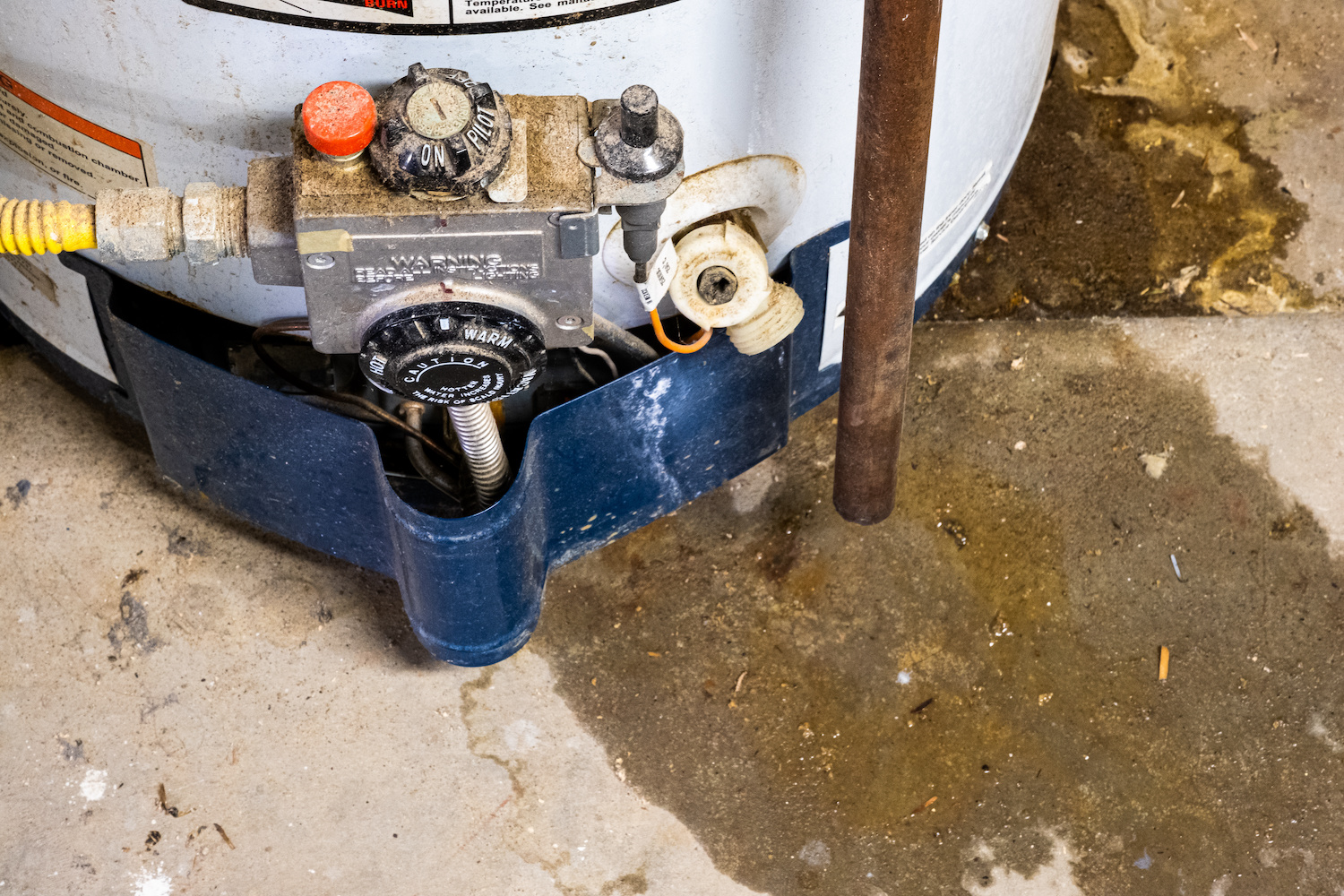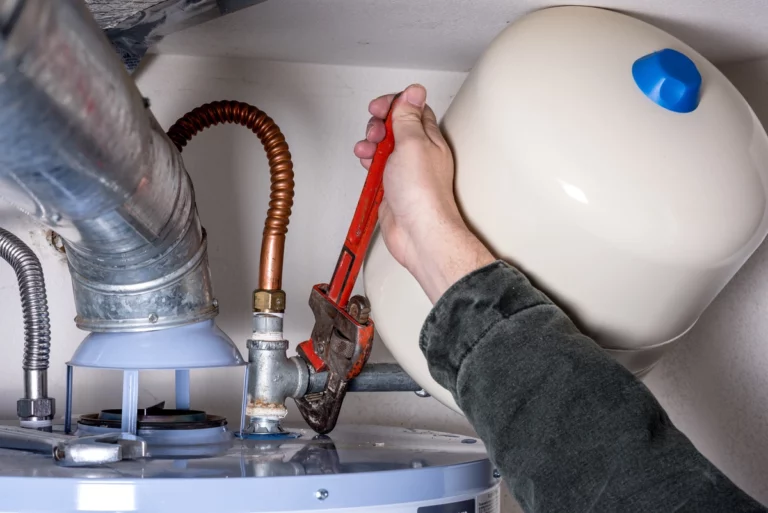The water heater is one of the unsung heroes of modern convenience, quietly supplying your home with hot water for showers, dishwashing, and laundry. But like any hardworking appliance, it doesn’t last forever. When a water heater begins to fail, it often gives off warning signs—some obvious, others more subtle. Recognizing these early can save you from cold showers and costly water damage. Let’s dive into the telltale signs that your water heater might be nearing the end of its life and what you can do about it.
1. Lukewarm or No Hot Water
One of the most glaring signs of a failing water heater is a noticeable drop in water temperature. If your once-steaming showers now feel more like lukewarm sprinkles, or if the water runs cold entirely, your heater might be in trouble.
Possible Causes:
- Sediment Build-Up: Over time, minerals from hard water settle at the bottom of the tank, creating a barrier between the water and the heating element.
- Faulty Heating Element: In electric water heaters, the heating element may burn out, leading to insufficient water heating.
- Thermostat Issues: A malfunctioning thermostat might not be accurately regulating the water temperature.
Quick Fix:
Before panicking, check the thermostat settings and reset the water heater. If the problem persists, it’s likely time for a professional assessment or replacement.
2. Strange Noises
Water heaters aren’t exactly silent, but if yours starts to sound like it’s auditioning for a percussion band, something’s off. Banging, popping, or rumbling noises are common indicators of underlying issues.
What’s Happening?
- Sediment Accumulation: As sediment builds up and hardens, it creates a layer of insulation over the heating element. When the element heats up, it causes the sediment to rattle around, producing a popping or banging sound.
- Expansion and Contraction: Metal parts inside the heater can expand and contract as they heat and cool, which may cause rumbling noises.
Why It Matters:
These noises aren’t just annoying—they signal that your water heater is working harder than it should, which can lead to premature wear and tear.
3. Water Discoloration or Rust
Turn on the tap, and instead of clear water, you’re greeted with a murky or rust-colored flow. This isn’t just unappealing—it’s a red flag that your water heater may be corroding from the inside.
Potential Causes:
- Rusty Tank: If rust appears when you use hot water, it could mean the interior of your water heater’s tank is rusting.
- Corroded Anode Rod: The anode rod, a sacrificial component designed to attract corrosive elements, may have worn out. Once it’s gone, rust attacks the tank itself.
Solution:
A corroded water heater is usually beyond repair. Replacing the anode rod might buy you some time, but if the tank is rusting, a new water heater is likely your best option.
4. Leaking Water
Water pooling around your water heater is a clear sign something’s wrong. Even a small leak can lead to bigger problems if left unchecked, including water damage and mold growth.
Why It Happens:
- Cracked Tank: Over time, metal tanks expand and contract due to constant heating and cooling, which can eventually lead to cracks.
- Loose Connections: Check the inlet and outlet connections, as well as the drain valve, for loose or worn-out fittings.
- Pressure Build-Up: Excessive water pressure or a malfunctioning pressure relief valve can cause leaks.
What to Do:
If you notice a leak, turn off the power and water supply to the heater and call a professional immediately. Depending on the cause, they might recommend repairs or a full replacement.
5. Reduced Water Flow
A decrease in water pressure or flow when using hot water could indicate an issue with your water heater. While this can also be a plumbing problem, your water heater may be the culprit.
Likely Causes:
- Sediment Build-Up: Again, sediment is a common villain. It can clog the pipes and reduce the efficiency of your water heater.
- Corroded or Blocked Pipes: Older water heaters may lead to mineral deposits clogging the system, restricting water flow.
Next Steps:
Flushing the water heater annually can help clear out sediment and maintain optimal water pressure. If the problem persists, you might need to replace the unit.
6. Frequent Repairs
If your water heater has developed a habit of breaking down or requiring frequent repairs, it’s a sign that it’s reaching the end of its lifespan. While occasional maintenance is normal, constant service calls can quickly become more expensive than a replacement.
When to Replace:
The general lifespan of a water heater is 8-12 years for traditional tank models and around 20 years for tankless models. If yours is nearing this age and frequently malfunctions, it’s likely time to invest in a new one.
7. Water Temperature Fluctuations
Do you ever find yourself adjusting the faucet constantly to maintain a steady temperature? Inconsistent water temperatures can indicate a failing water heater.
Possible Issues:
- Thermostat Failure: An unreliable thermostat might be causing temperature swings.
- Scaling on Heating Elements: Hard water scaling can reduce the heater’s ability to maintain consistent temperatures.
Pro Tip:
Consider installing a water softener if you live in an area with hard water to extend the lifespan of your water heater and other appliances.
8. Unusually High Energy Bills
Have you noticed a spike in your energy bills without any major changes in your household’s energy usage? A failing water heater might be the culprit.
Why It Happens:
- Reduced Efficiency: As sediment builds up or components wear out, the water heater has to work harder (and consume more energy) to heat the water.
- Outdated Technology: Older water heaters aren’t as energy-efficient as modern models.
Upgrade to Save:
Replacing an aging water heater with an energy-efficient model can save you money in the long run, both in operating costs and potential repair bills.
9. The Age of Your Water Heater
Sometimes, the clearest sign of impending failure is simply the water heater’s age. Most traditional tank water heaters have a lifespan of about 10 years. Tankless water heaters last longer but can still wear out over time.
How to Check:
If you’re unsure of your water heater’s age, look for the manufacturer’s label. It will typically include a serial number that can be used to determine the production date.
What to Do If Your Water Heater is Failing
If you’ve identified one or more of these signs, it’s time to take action. Here are some steps to consider:
- Consult a Professional: A licensed plumber can diagnose the issue and recommend the best course of action.
- Consider Replacement: If your water heater is old or frequently failing, it may be more cost-effective to replace it with a newer, energy-efficient water heater.
- Perform Regular Maintenance: Annual flushing, checking the anode rod, and inspecting connections can extend the life of your water heater.
Conclusion: Don’t Let a Failing Water Heater Ruin Your Day
A water heater may not be the most glamorous appliance in your home, but it plays a crucial role in your comfort. By recognizing the signs of failure early, you can avoid the inconvenience of cold showers and the expense of emergency repairs. Keep an eye (and an ear) on your water heater, and when it starts acting up, don’t hesitate to take action!





